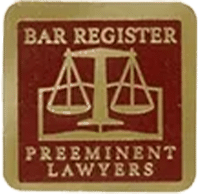
You can get money through a personal injury case by proving that someone else’s negligence caused an accident that hurt you. To prove negligence, you must show that the responsible party meets four legal criteria — they owed a duty to you, they breached that duty, the breach caused your injury, and you suffered financial losses.
Proving negligence is no easy task, but an experienced personal injury lawyer can help. An attorney can investigate your case, determine liability, gather evidence, and fight for maximum compensation for you.
If you suffered injuries in an accident in Oklahoma, contact Edwards & Patterson Law for a free initial case review. Our experienced attorneys can explain what to expect during the claims process and support you every step of the way.

Get Your FREE & Confidential Case Review Today!
Get Your FREE Case Review Today
Contact us today for your free & confidential case review. Our team will help you get the compensation that you deserve.
What is Negligence?
Negligence refers to a person’s failure to act with a level of care that a reasonably prudent person would use under the same circumstances. The failure to act with due care could come through a careless act or a failure to take action to prevent harming someone else. In personal injury cases, negligence arises when a party breaches their duty to act with reasonable care and causes another party to suffer injuries and related losses.
Proving negligence in personal injury claims requires establishing four elements — duty, breach, causation, and damages.
What is Duty?
In a personal injury claim, a duty is a requirement to perform some action as required by law, custom, or public policy. General duties under public policies or customs include acting with reasonable care. For example, motorists must operate their vehicles carefully and safely while observing all applicable traffic laws.
What is Breach?
A breach of duty occurs when a party’s conduct fails to meet an applicable standard of care or fails to act as another person exercising ordinary care would in an identical situation. A breach of one’s duty of care can lead to an accident or incident that injures another person.
What is Causation?
Causation refers to whether a potentially negligent party’s breach legally caused an accident victim’s injuries. Causation comes in two types — actual causation and proximate causation.
- Actual causation, or cause in fact, means the injury would not have happened if not for the responsible party’s reckless act or omission. Imagine a driver runs a stop sign and hits a car traveling lawfully through an intersection. In that case, the driver’s actions are the actual cause of the collision.
- Proximate causation is more complicated. It can be determined by asking whether a reasonable person could have foreseen the potential for injury through their conduct. For instance, it is foreseeable that drunk driving raises the risk of a car crash.
Proximate cause could be the same as the actual cause, but not always. Let’s say a driver was texting while driving and rear-ended the car ahead of them. However, the victim’s airbag was defective and failed to deploy, causing them to strike their head on the steering wheel. In that case, the driver who rear-ended the car was the actual cause. The faulty airbag is the proximate cause. In either example, an experienced attorney can identify who should be held liable and help victims pursue compensation from all possible sources.
What Are Damages?
Damages is the legal term for compensation for an accident victim’s losses due to their injuries. Victims can recover money for financial losses such as medical bills, lost wages, and lost earning potential, as well as personal losses such as physical pain, emotional distress, or lost quality of life.
Which of the Four Points Can Be Hardest to Prove?
Disputes can arise over any of the four elements of negligence, but most focus on breach and causation. For example, the outcomes of many auto accident cases hinge on whether a driver breached their legal duties and caused the accident. Breach and causation often involve more fact-intensive disputes.
What Are Some Examples of Negligence?
Examples of negligence in auto accident cases include:
- Speeding
- Running red lights or stop signs
- Following too closely
- Not using turn signals or mirrors
- Failing to yield the right of way when required by law or custom
- Driving while intoxicated or distracted
- Inadequate vehicle maintenance
Negligence in medical malpractice cases might include acts or omissions like:
- Failure to diagnose
- Misdiagnosis
- Surgical errors
- Anesthesia errors
- Medication errors
Examples of negligence in premises liability cases include:
- Failure to clean up spills
- Failure to fix broken stairs, elevators, or escalators
- Having unsecured flammable or toxic hazards on site
- Inadequate lighting
- Insufficient or negligent security

Get Your FREE & Confidential Case Review Today!
Get Your FREE Case Review Today
Contact us today for your free & confidential case review. Our team will help you get the compensation that you deserve.
What Sort of Evidence Is Needed to Prove Negligence?
Evidence you may need to prove negligence in your personal injury case will depend on the type of accident or incident that caused your injuries. Examples of evidence used to prove personal injury claims include:
- Medical records
- Accident scene photos and videos
- Surveillance or traffic camera footage
- Accident or incident reports
- Eyewitness statements
- Inspection and maintenance reports
- Computer or cell phone logs or records
- Drug or alcohol test results
- Accident reconstruction or engineering expert reports
- Expert testimony
What is Comparative Negligence?
Comparative negligence is a method of assigning liability for injuries and losses when responsibility for an accident may fall on several parties. In these cases, each party is assigned a percentage of fault for their role in causing the accident. With comparative negligence, the injured victim’s financial recovery is reduced in proportion to their share of the fault.
Oklahoma uses a modified comparative negligence rule. Under state law, an injured accident victim may pursue a personal injury claim after an accident only if their share of fault for the accident does not exceed the responsibility or collective fault of the other party(s) who caused the accident.
Let’s say an injured accident victim suffered $100,000 in losses because of their injuries but bears 25 percent of the fault for causing their accident. Under the comparative negligence rule, the victim’s compensation will be reduced by $25,000 to reflect their share of liability.
What Are Some Common Personal Injury Claims?
Common personal injury claims that our firm handles include:
- Car accidents
- Truck accidents
- Motorcycle accidents
- Bicycle accidents
- Pedestrian accidents
- Defective product accidents
- Slip and fall accidents
- Premises liability accidents
- Dog bites
- Construction accidents
- Medical malpractice
- Nursing home abuse
- Birth injuries
- Brain injuries
- Spinal cord injuries
- Toxic torts
Contact an Oklahoma Personal Injury Lawyer
Getting legal help can preserve your right to compensation after suffering injuries in an accident caused by someone else’s negligence. Contact Edwards & Patterson Law today for a free consultation with a knowledgeable Oklahoma personal injury lawyer.
Visit Our Personal Injury Law Offices
Last updated Wednesday, December 4th, 2024















